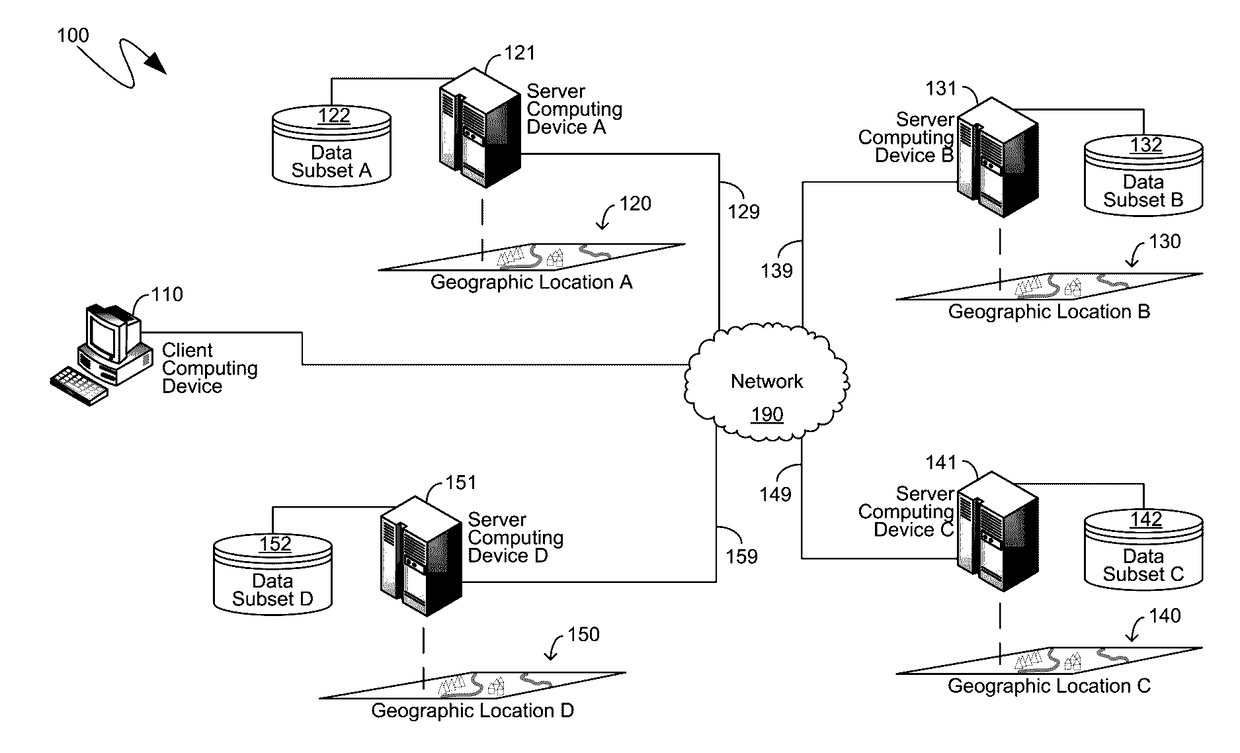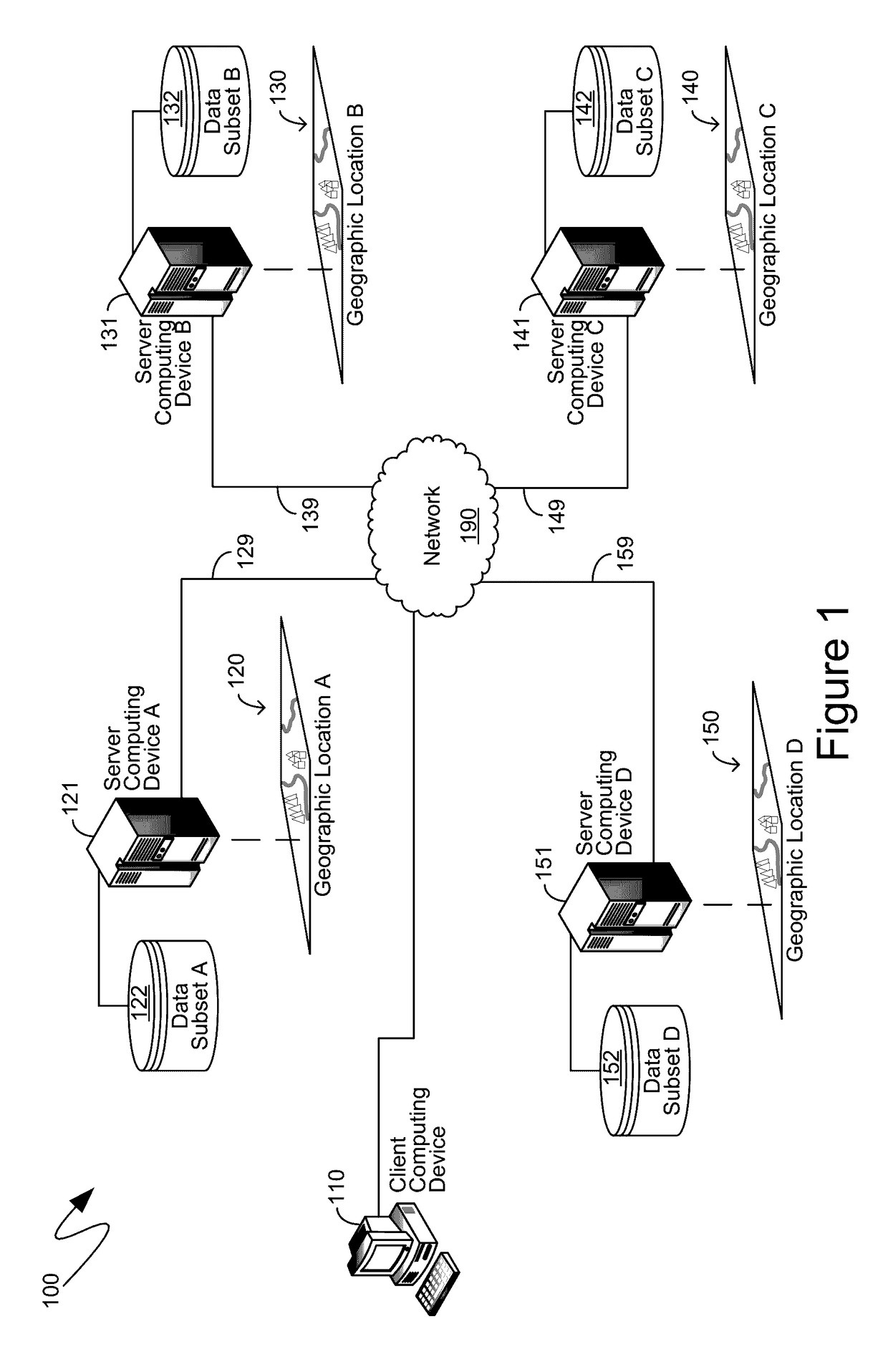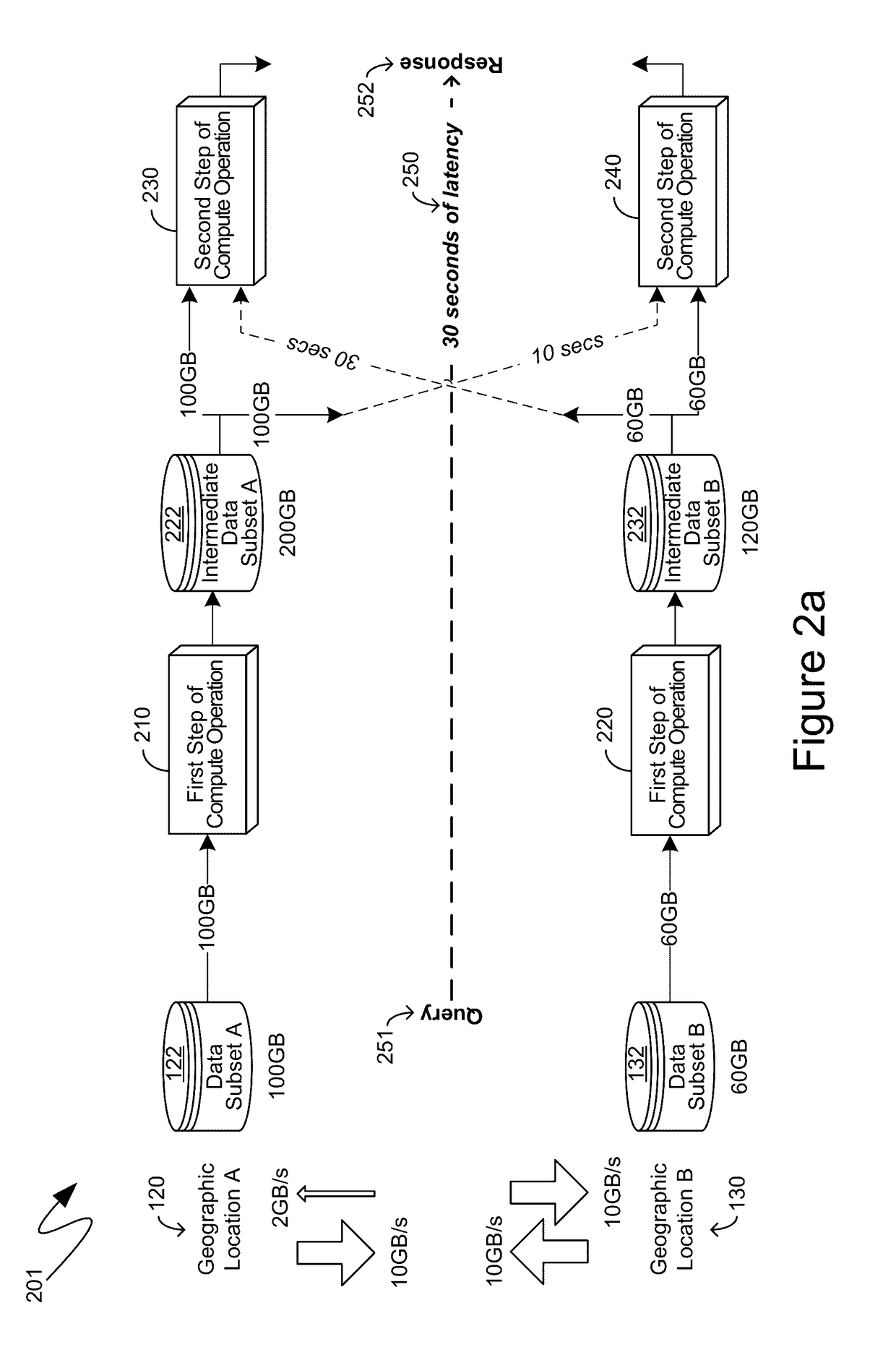Latency reduction with pre-moving of distributed data and adaptive allocating of compute operations
- Summary
- Abstract
- Description
- Claims
- Application Information
AI Technical Summary
Benefits of technology
Problems solved by technology
Method used
Image
Examples
Embodiment Construction
[0010]The following description relates to reducing the latency in responding to queries directed to geographically distributed sets of data. The geographically distributed data can be moved among different geographic locations prior to receipt of the query. Additionally, proportions of intermediate steps performed by computing devices in different geographic locations can be adaptively allocated. The combination of such controls can result in latency reduction, thereby enabling the geographically distributed system to more quickly respond to user queries. Such reduced latency is beneficial to users in that more queries can be submitted and processed within a given period of time and the user is not forced to wait as long to obtain the results to their queries. Additionally, the aforementioned controls are adaptive to real-world scenarios where the communicational capability of computing devices in different geographic locations is not homogenous and is subject to variance, thereby ...
PUM
 Login to View More
Login to View More Abstract
Description
Claims
Application Information
 Login to View More
Login to View More - R&D
- Intellectual Property
- Life Sciences
- Materials
- Tech Scout
- Unparalleled Data Quality
- Higher Quality Content
- 60% Fewer Hallucinations
Browse by: Latest US Patents, China's latest patents, Technical Efficacy Thesaurus, Application Domain, Technology Topic, Popular Technical Reports.
© 2025 PatSnap. All rights reserved.Legal|Privacy policy|Modern Slavery Act Transparency Statement|Sitemap|About US| Contact US: help@patsnap.com



